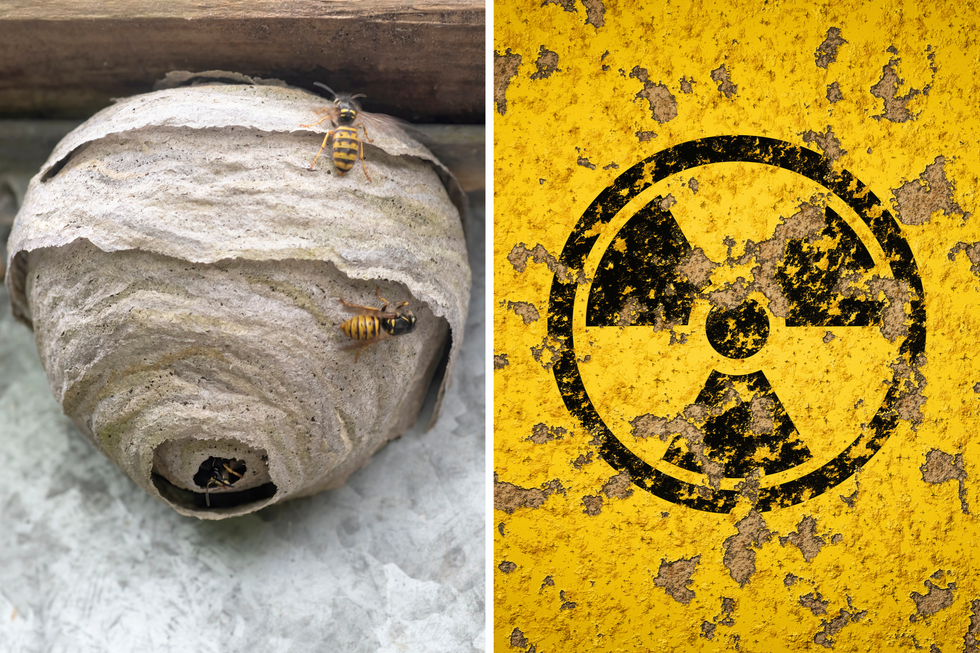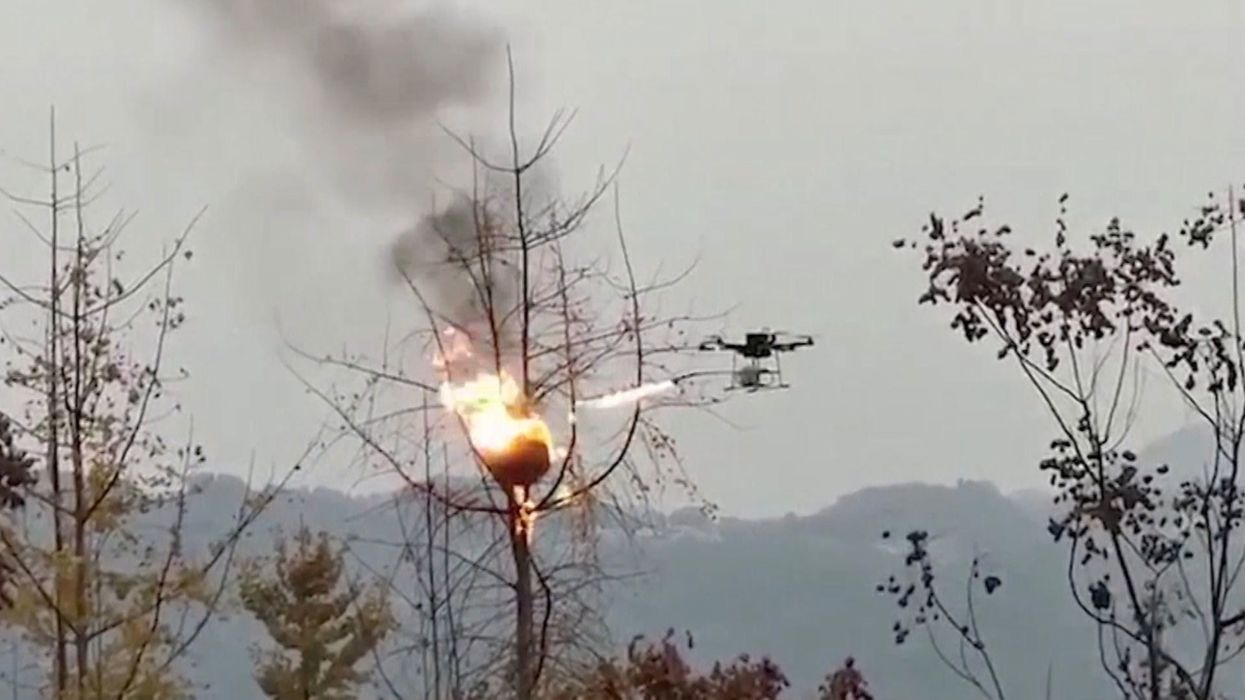A radioactive wasp’s nest has been found by workers at a site in South Carolina formerly used to make key parts for nuclear bombs.
The discovery was made by workers who routinely check the radiation levels at the Savannah River Site (SRS) in Aiken, South Carolina. It was opened in the 1950s and was where the plutonium pits required to make the core of nuclear bombs were manufactured.
On July 3, they came across the nest that had been built on a post close to where liquid water from the nuclear site is stored, a report from the U.S. Department of Energy explained
Officials say that when tested, the nest had 10 times the radiation level that’s allowed under federal regulations.
It was sprayed with insect spray, then removed and disposed of as radioactive waste.
The reports said there are no leaks from the waste tanks, leading them to believe that the nest became radioactive by “onsite legacy radioactive contamination” with radioactivity that was residually left on the site.

Some wasp enthusiasts are keen to know which type of wasp nest it was, as different species make nests out of different materials, and could help pinpoint what and where the radioactive material was collected.
Tom Clements, executive director of the watchdog group, Savannah River Site Watch, told AP: “I’m as mad as a hornet that SRS didn’t explain where the radioactive waste came from or if there is some kind of leak from the waste tanks that the public should be aware of.”
According to the Aitken Standard, had live wasps been found on the nest, their individual radiation levels would have been lower than the nest’s itself.
Radioactive discoveries continue to crop up across the world in unexpected places over recent years. It was previously reported that wild boar in southeastern Germany have long contained high levels of radioactive substances, which has been attributed to the 1986 Chernobyl nuclear disaster. Read more here.
Why not read…
World's most dangerous substance 'kills you in 2 days' if you look at it for 5 minutes
Watch moment world's sixth-largest earthquake on record wreaks havoc on Russia
Astronaut captures elusive flamingo pink aurora in awe-inspiring footage
Sign up for our free Indy100 weekly newsletter
How to join the indy100's free WhatsApp channel














